We wanted to travel from Gilgit down to Islamabad. I say ‘wanted’ but I mean more like, ‘dreaded’. Our options included a low-flying prop plane in the mountains on a flight that is regularly cancelled for weather conditions; and fifteen hours on an overnight bus, also in the mountains, and in the past occasionally the subject of sectarian attacks. The airline’s safety record, we read, was ‘nothing to boast about’ and every bus ride we’d taken so far was characterized by wild swerving and reckless speeding.
The airport in Gilgit is so tiny that it is literally in the city, and conveniently just down the street from our guesthouse. I got out of bed one morning and walked over in my pajama pants, and asked some pilots drinking tea by the check in counters if there would be a flight according to schedule later that day. They didn’t know – it was (hopefully, I thought) still in Islamabad, and the morning flight out had already been cancelled due to the thick clouds looming over the mountains. I guess that’s why we were never disturbed by air traffic, despite staying next to an airport.
Skimming cloud-wreathed mountains in a plane or driving through them on steep and slippery cliffs: neither option was particularly appealing but at least the bus was going to depart, rain or shine (or clouds).
At the bus station we watched and waited as the passengers loaded the bus and the driver loaded a gun. Just kidding. The gun was already loaded, and lying on the front seat when we climbed aboard.
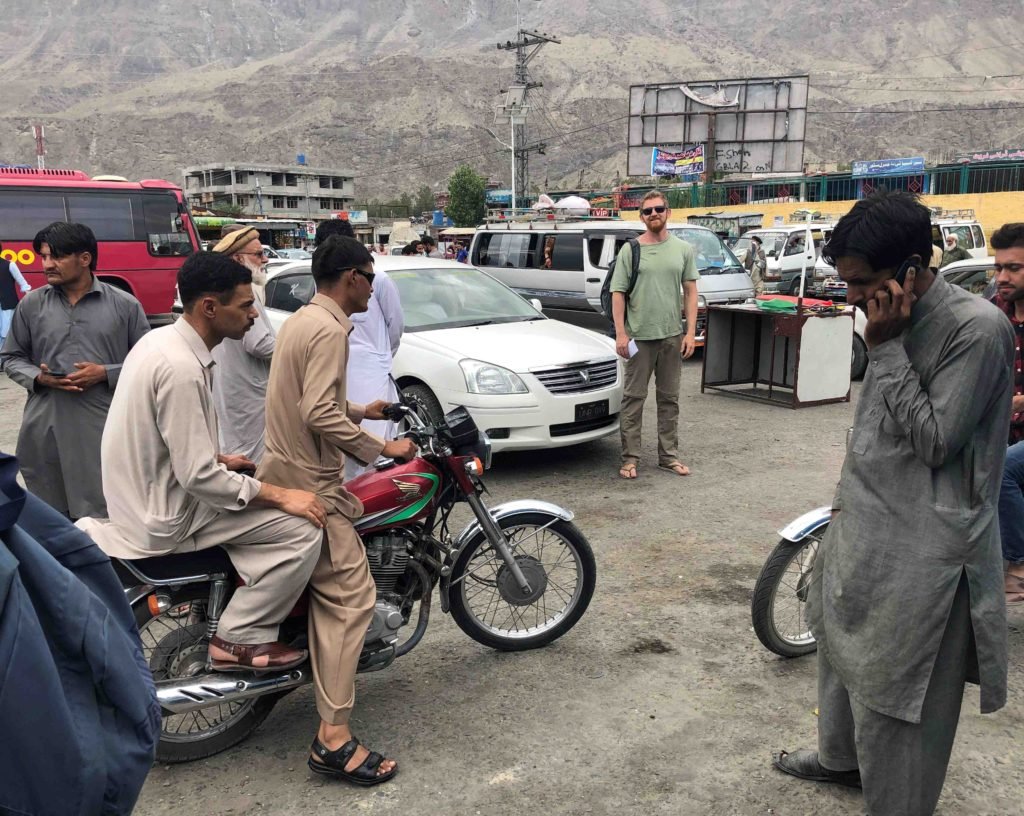
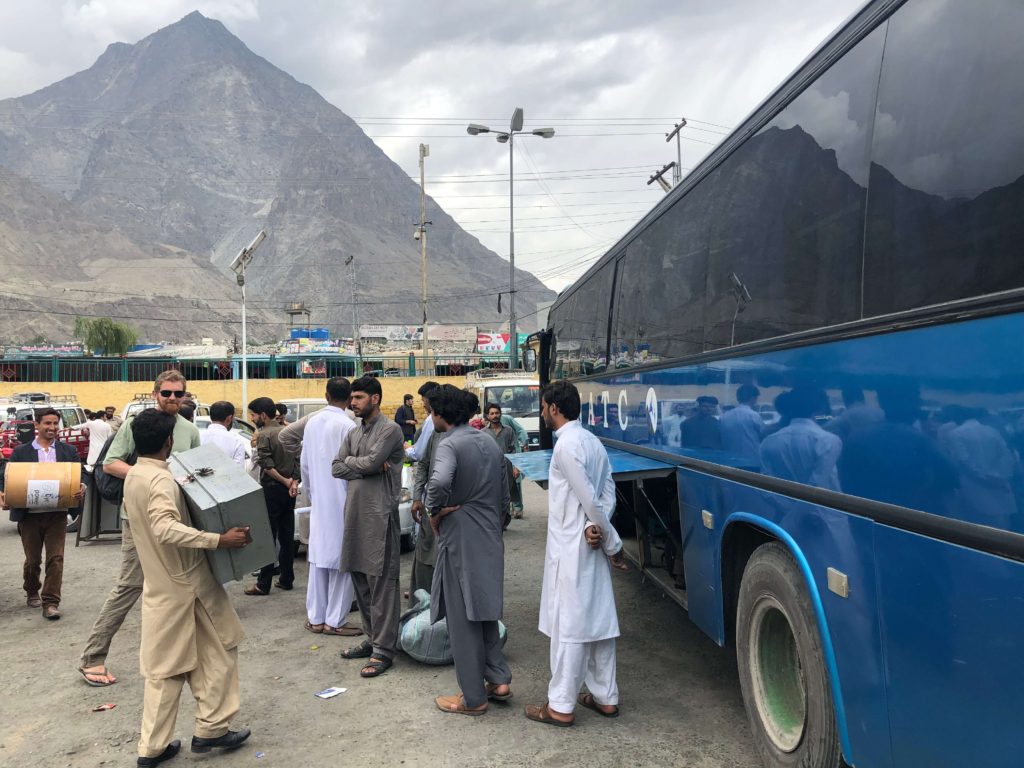
Settled into our places I closed the curtains and avoided looking out the window at the sheer drop beside the wheels as the bus slowly laboured upwards to the highest pass on the trip. At the top, thick mist closed in around us and it felt like the bus was lost in the clouds, shuddering on hairpin turns and sometimes easing slowly backwards, several thousand meters (4173 metres, to be exact) above the distant, invisible valley. Finally it was night and I fell asleep, waking up only occasionally when the bus driver swerved wildly or sped recklessly in the dark as we approached the city and the road improved.
Islamabad is a young city – built in the 1960s it replaced Karachi as the capital. Home to the Pakistani elite, cosmopolitan and clean, this is one of the safest places in Pakistan: a planned city of wide streets connecting pockets of urbanisation with huge stretches of empty green space in between. It’s like a city in a forest.
Car-based and sprawling, Islamabad has all the trappings of the West. We went to a big, glitzy mall, where everyone was shopping for designer clothes and jewellery and eating ice cream. Some women wore headscarves, some didn’t. None of the men wore a shalwar kameez. If you looked past the stringent gun-toting security at the doors, and the kiddy beauty pageant underway on the main floor overseen by a lot of proud, cigarette smoking dads, you could be in a mall at home.
We Ubered up to the top of Margalla Hills, part of the Himalayan foothills. Incidentally, a passenger plane crashed into this hill a couple of years ago due to total inadequacy on the part of the pilot…maybe the bus wasn’t so bad after all. There we ate at Monal, a multi-terraced restaurant swarming with huge families (and security). It’s so much better looking out over a cliff at the city lights below, from the dinner table instead of a bus window.
And we went to see the very modern Shah Faisal mosque:
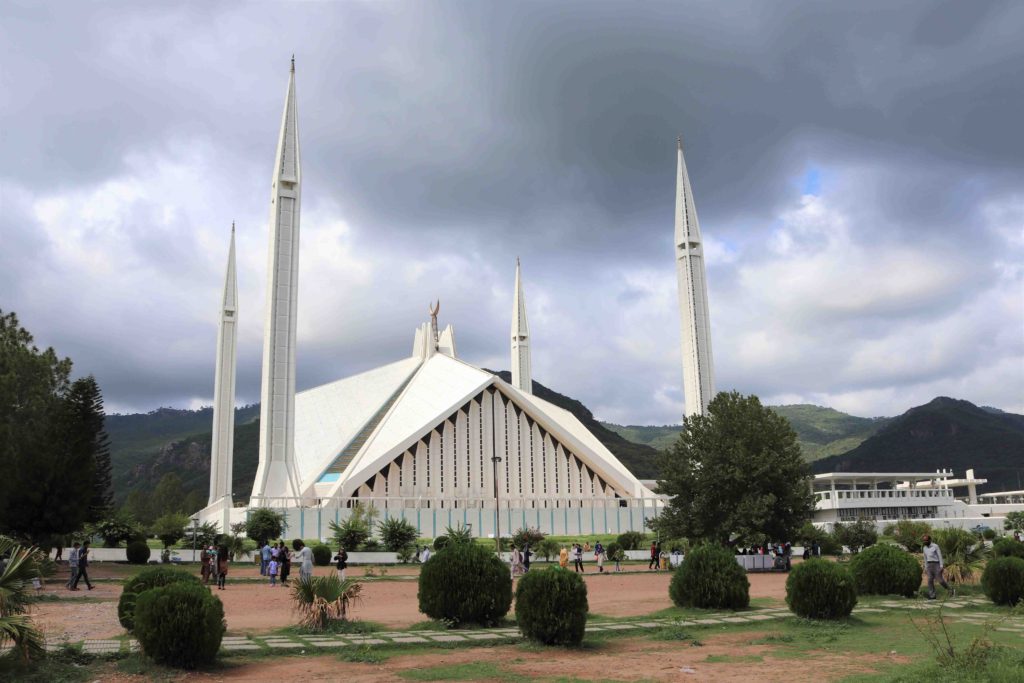
Just to keep it real, the occasional cab driver would refuse payment or invite us to his house for tea. Otherwise, sitting in a cafe with real, good coffee, the air-conditioner blasting cold air into our faces, surrounded by chatting couples and friends, we could be anywhere in the world.
So we got comfortable. It was hot; we had aircon (and reliable electricity, for a change). And Uber. We had coffee and finally, something besides channa or fried eggs for breakfast.
Then we took a bus to Peshawar.
As we rolled into town, we noticed something very different right away: an increasing number – in fact an overwhelming number – of women wearing the full, Afghan-style burka. This, against a backdrop of messy, hectic streets; donkey- and camel-carts piled high with straw or produce; workers making mudbricks roadside; and men driving precariously overloaded scooters (think, a scooter with a fridge tied to it) – suddenly Islamabad felt very far away, even though it was less than two hundred kilometers behind on us on the smooth-paved highway.
At the hotel we went to by rickshaw – no Ubering around here – Oyv handed over our passports while I lurked in the background, adjusting the headscarf I’d put on before getting off the bus. The receptionist took note of our different last names and nationalities.
Receptionist (frowning slightly at the passports): ‘Do you require separate beds sir? Or….only one bed?’
(Several other staff members behind the desk look on with great interest)
Oyv (with heavy emphasis on the last two words): ‘Let me just check with my wife.’
Never has our marriage come under so much scrutiny. Well, except every single day whenever we meet someone new, who invariably asks how many children we have (none) and then demands to know how long we’ve been married.
Unlike nearly-brand-new Islamabad, this is the oldest city in Pakistan. In fact it’s one of the oldest in the world – there has been civilisation here in one form or another since 540 BC. Home to the famously friendly Pashtun people, crowded, busy and packed with crumbling antiquities: until recently Peshawar was one of the most dangerous places in the country.
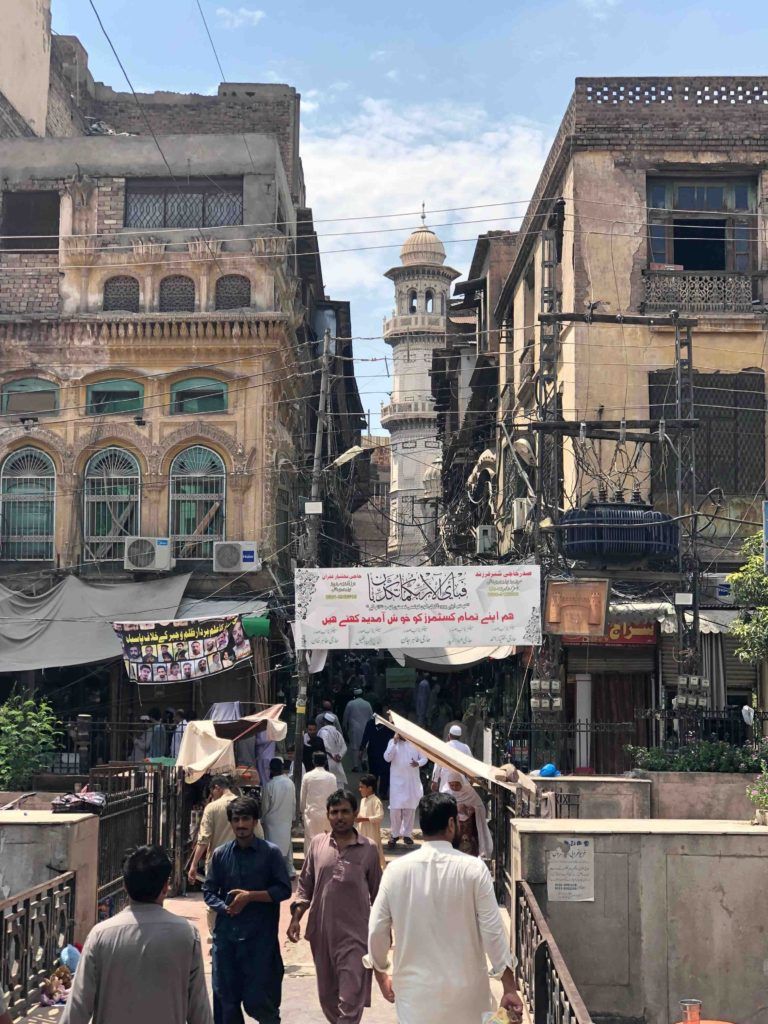
This city is alive – the narrow lanes in the old town heave with people eating, socializing, praying, sleeping, working, arguing, hawking, buying, selling, getting their hair cut or some dental work done. Far from the broad car-based boulevards of Islamabad – the warren of streets here are choked with honking sputtering auto-rickshaws (no rickshaws allowed in Islamabad, a local there had told me, laughing dismissively). Gone are the green trees and parks, replaced with dusty streets and a distinct frontier-town feel. Islamabad’s glitzy malls have been replaced with the twisting kilometers of a maze-like bazaar, where you can get lost for hours.
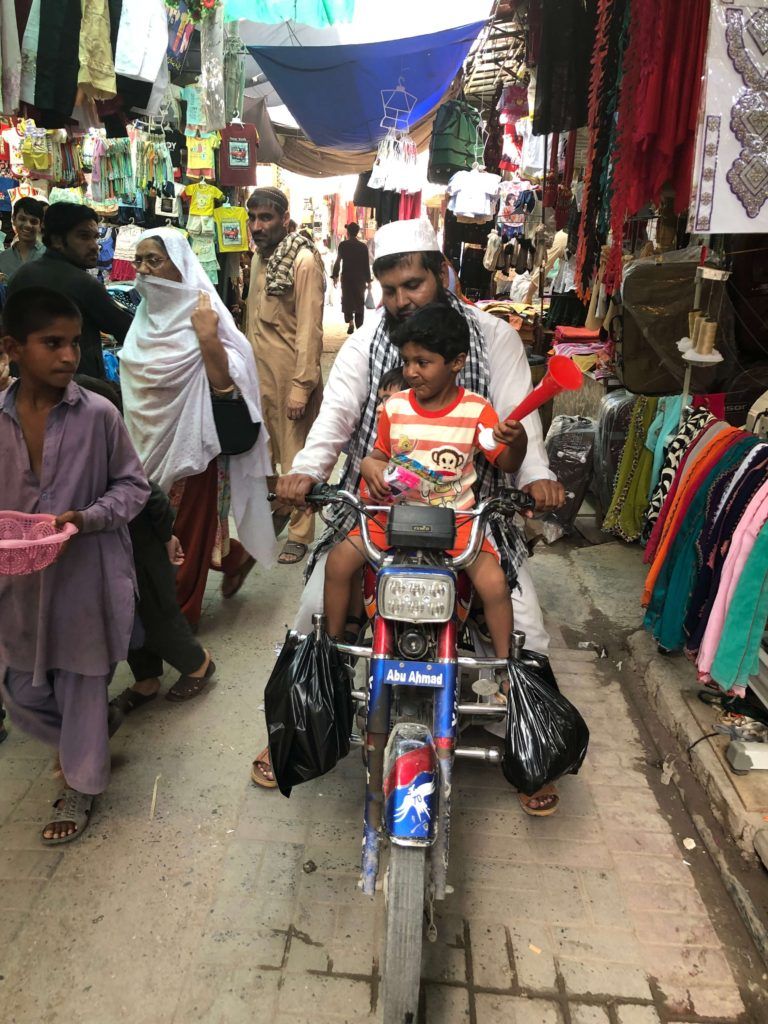
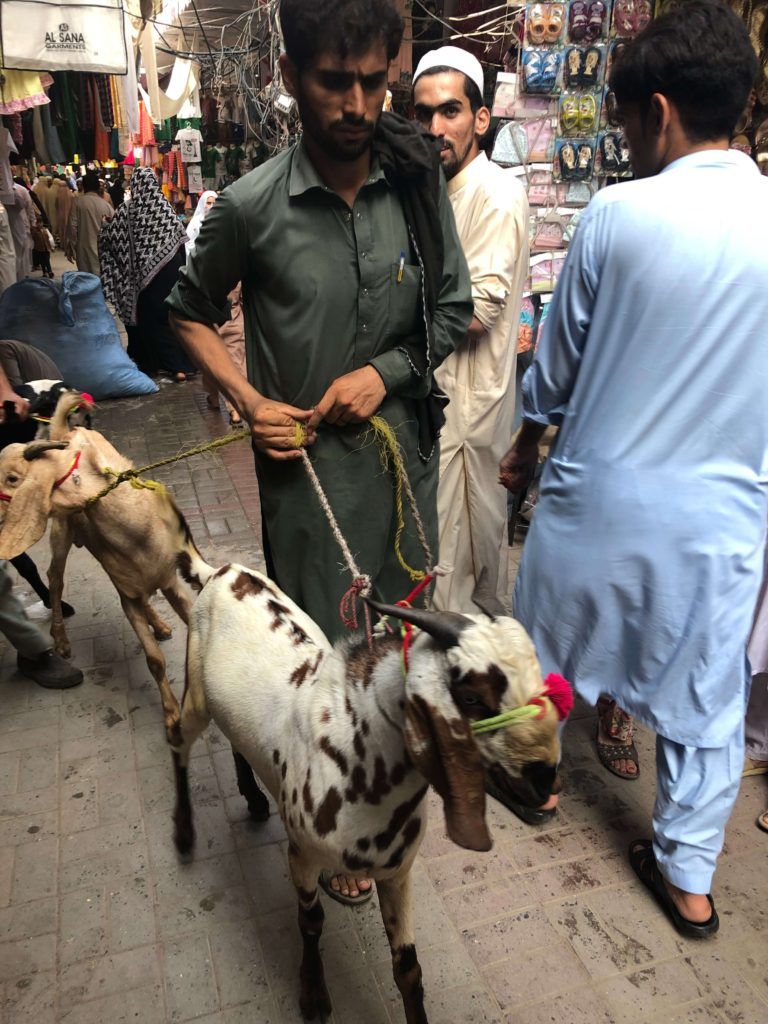
The people are different here, too. The Pashtuns have their own language and a fundamentalist approach to Islam. Close as the city is to the border with Afghanistan, there is also a large population of Afghans, mostly leftover refugees from the Afghan-Soviet war in the ’80s who never went home, and their descendants.
Peshawar quickly turned out to be one of the most conservative and yet friendliest places we’ve ever been. We spent a few hours wandering in the old city bazaars, stopping for tea and conversation until the famous Peshawari hospitality overwhelmed us and we had to go hide at the hotel.
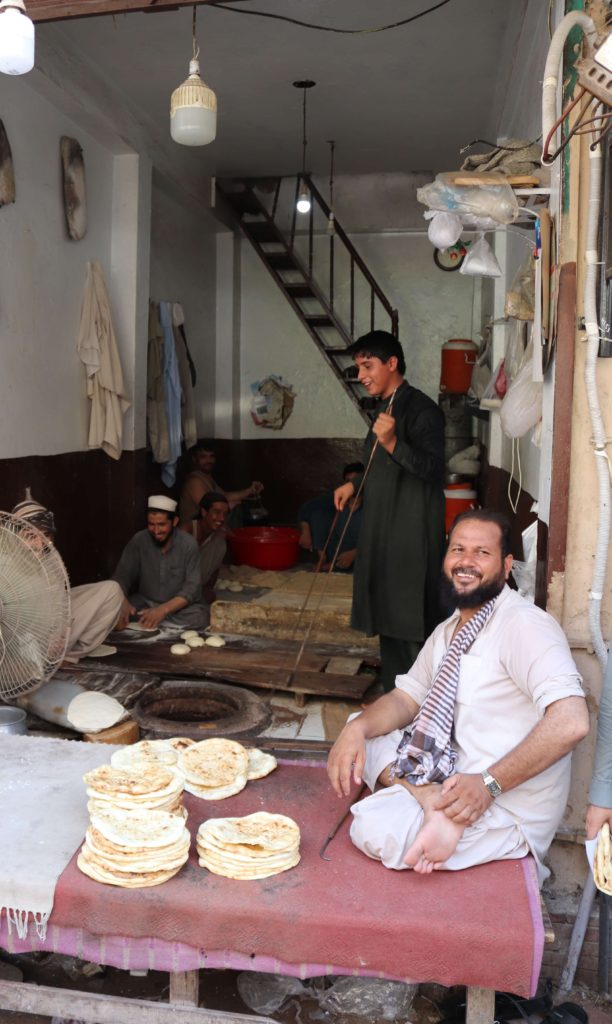
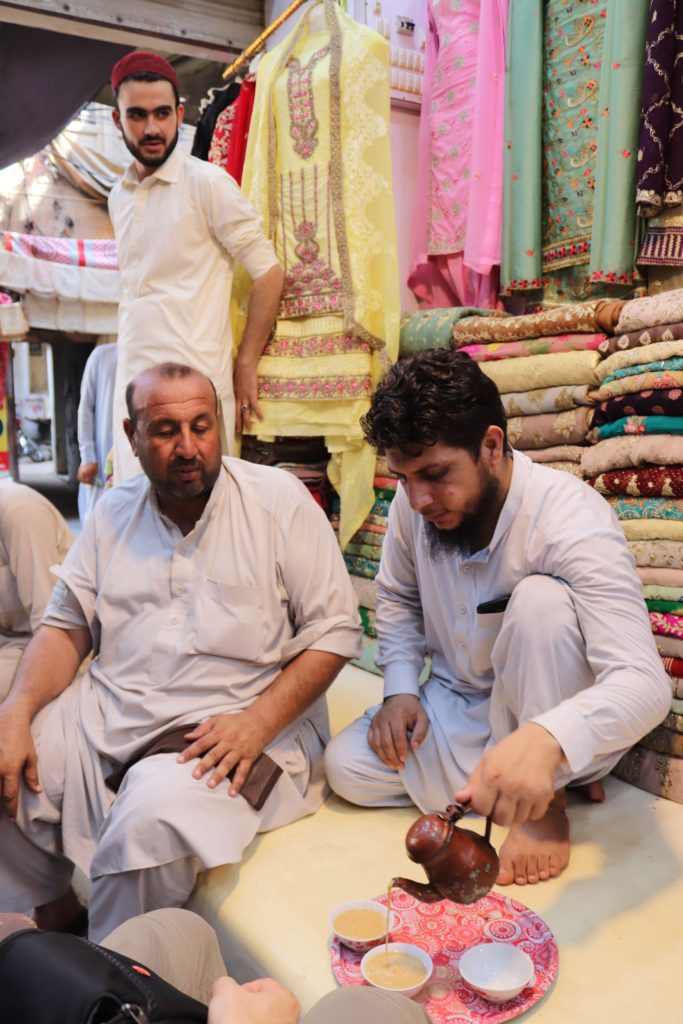
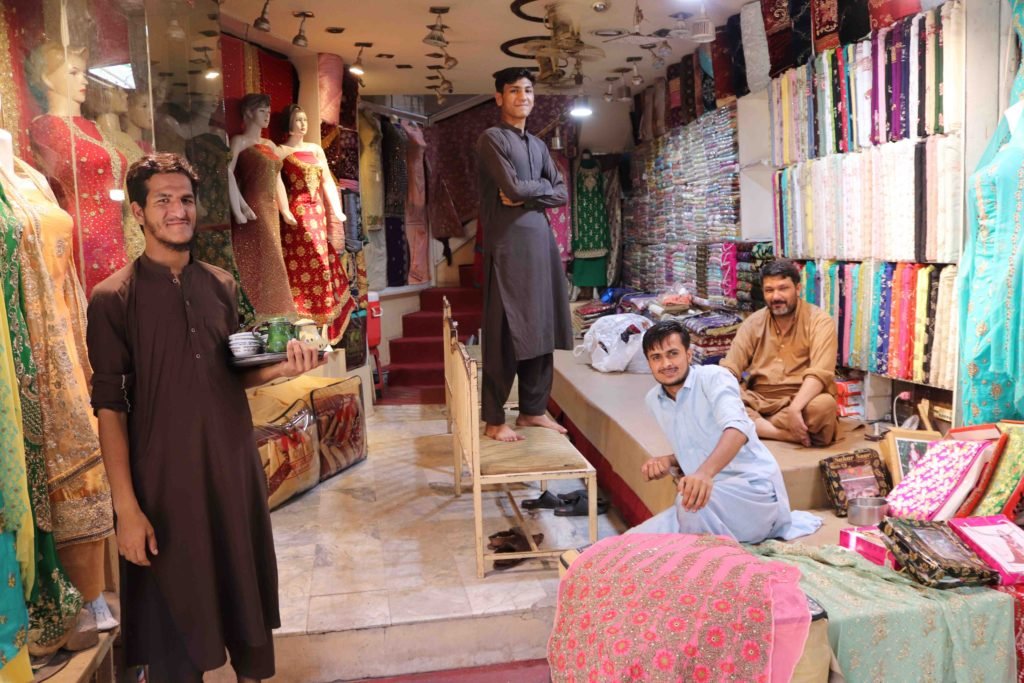
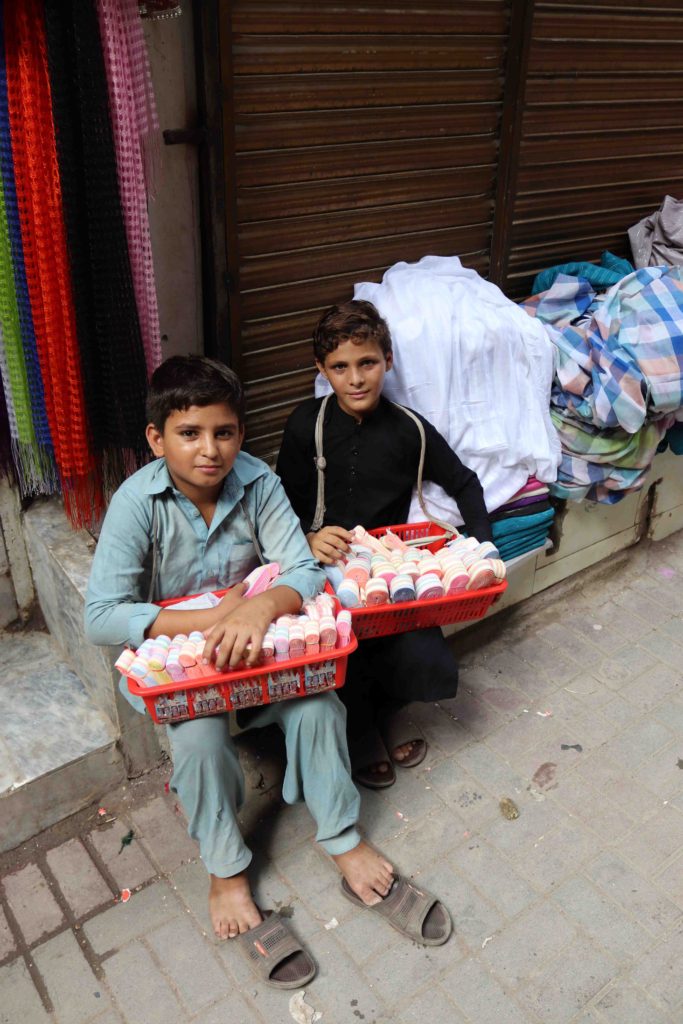
But this city, and much of Pakistan in general, is still very much a man’s world. Men dominate the streets and public places. Even in the cloth bazaar it was all men selling women’s clothing.
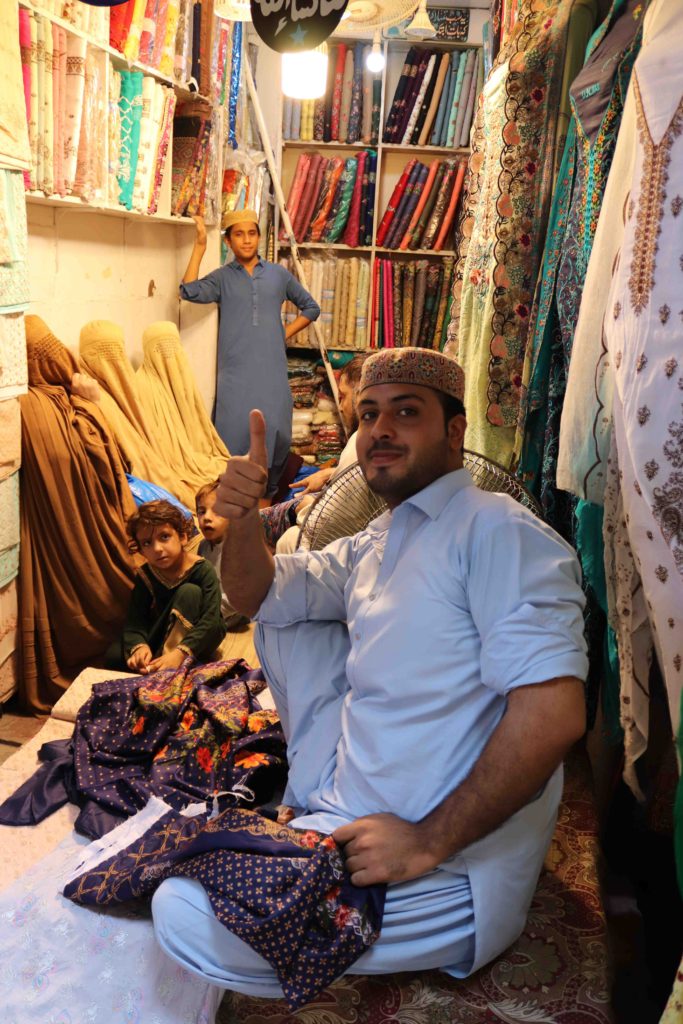
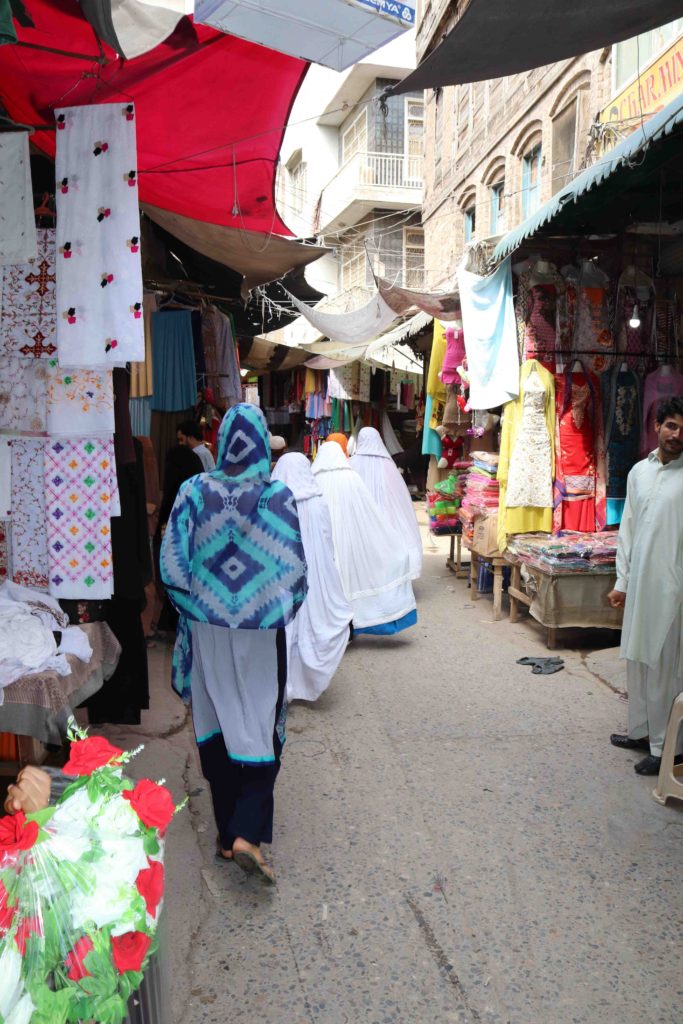
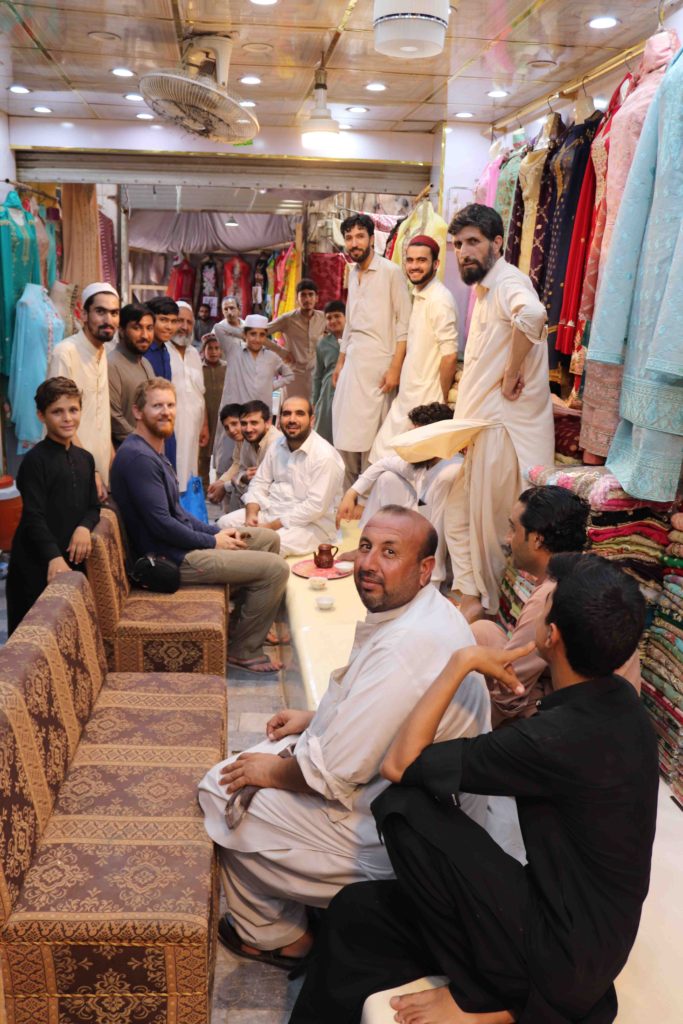
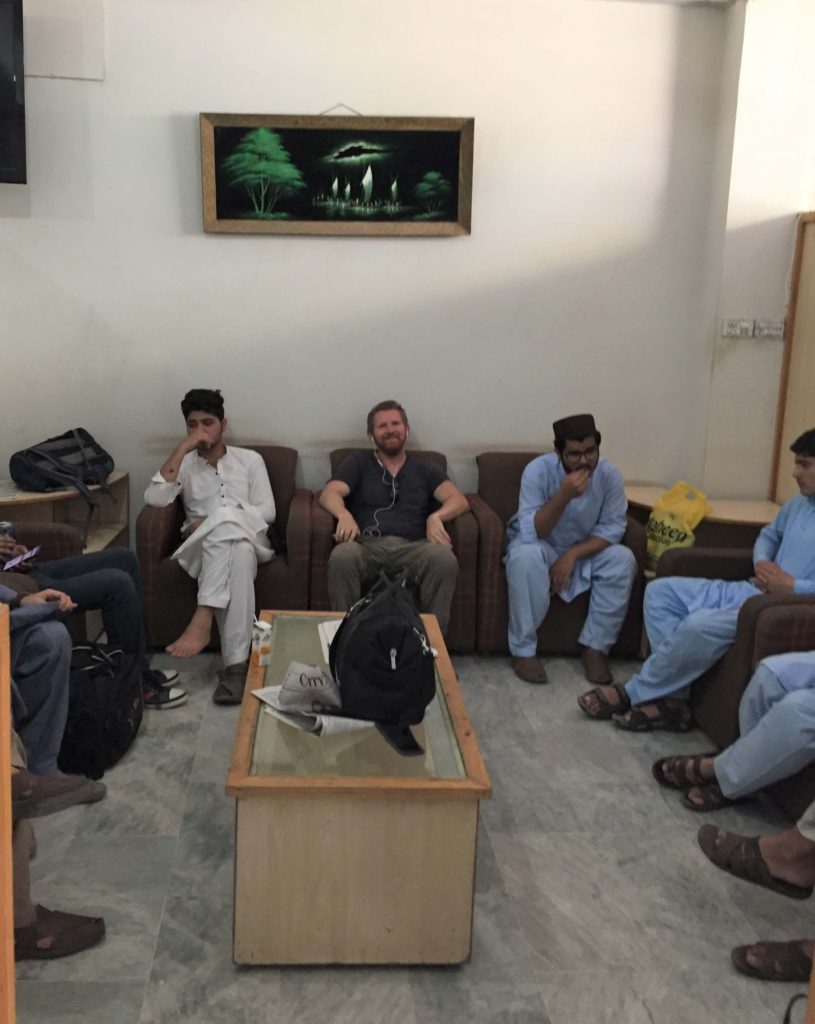
Unlike in Islamabad, men and women don’t mingle together in public. Women who weren’t already wearing the veil covered their faces and turned away – sometimes even ran away – as Oyv approached. The only women we saw running in Islamabad were out for their morning exercise before the sun could drive everyone into hiding. In Peshawar life went on despite the heat and people just crowded, sweating, into small patches of shade offered by canopies strung overhead.
Just as we left the mountain villages of the north behind for the gated homes and businesses of the capital city, in turn the ice-cold malls and iced coffees there gave way to sweltering bazaars and invitations for ‘only one more’ chai. We didn’t know what we’d find in either of these places. Mainly we knew that Islamabad is generally considered ‘pretty safe’ and Peshawar…well, not so much. We ended up liking both of these very different cities, their contrasts and uniqueness, for themselves and in their own way. And both just one turbulent night-bus-from-Gilgit away.
Read More
For more of our adventures (and misadventures) in Pakistan, check out the rest of my stories from the road. And to help you out with all those details – I’ve also written a travel guide for Peshawar and Swat Valley.



